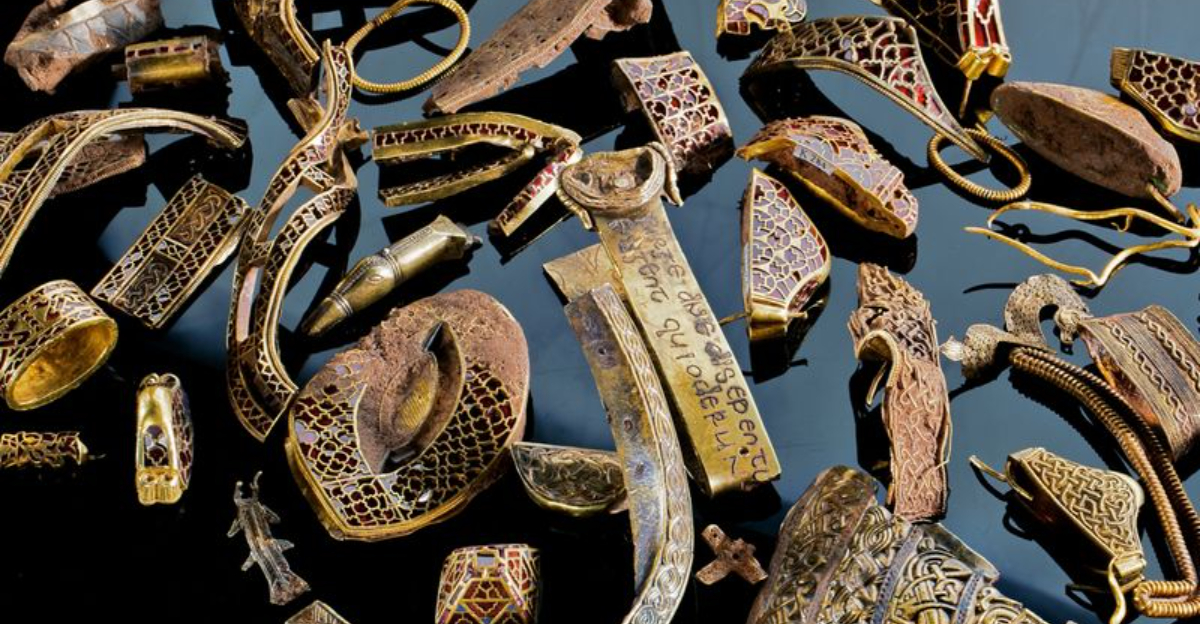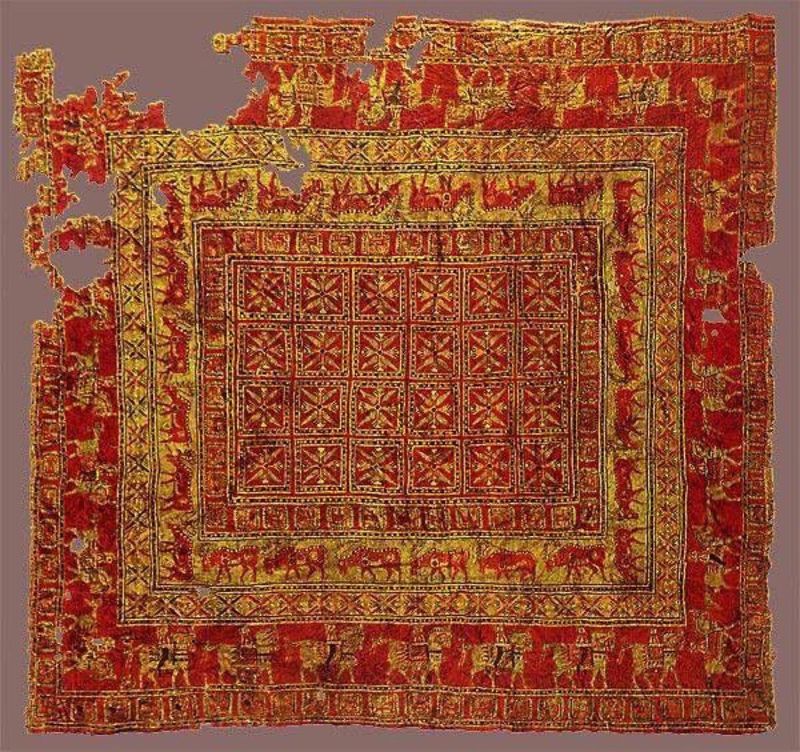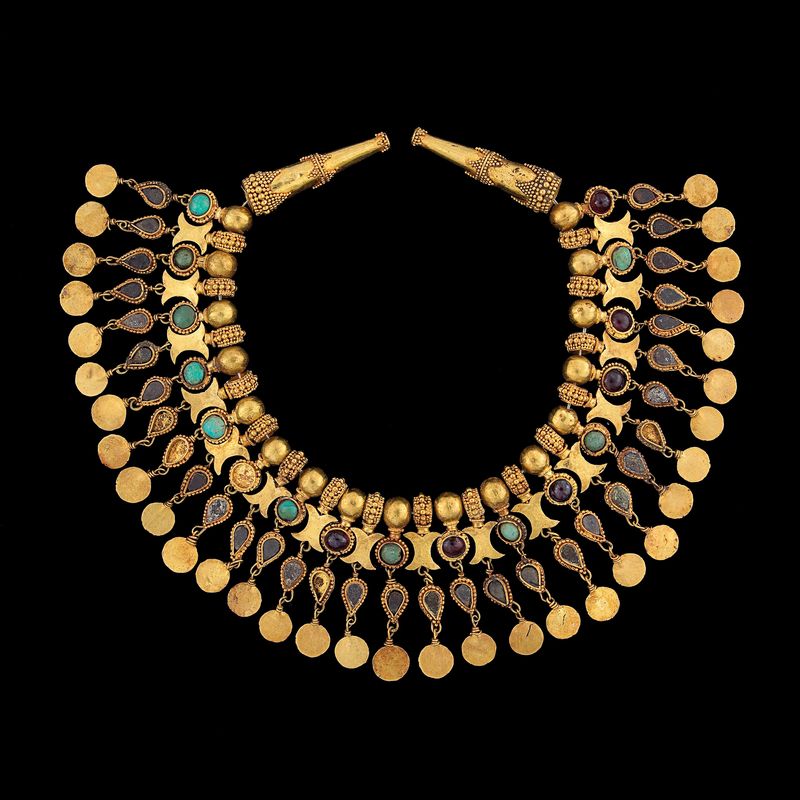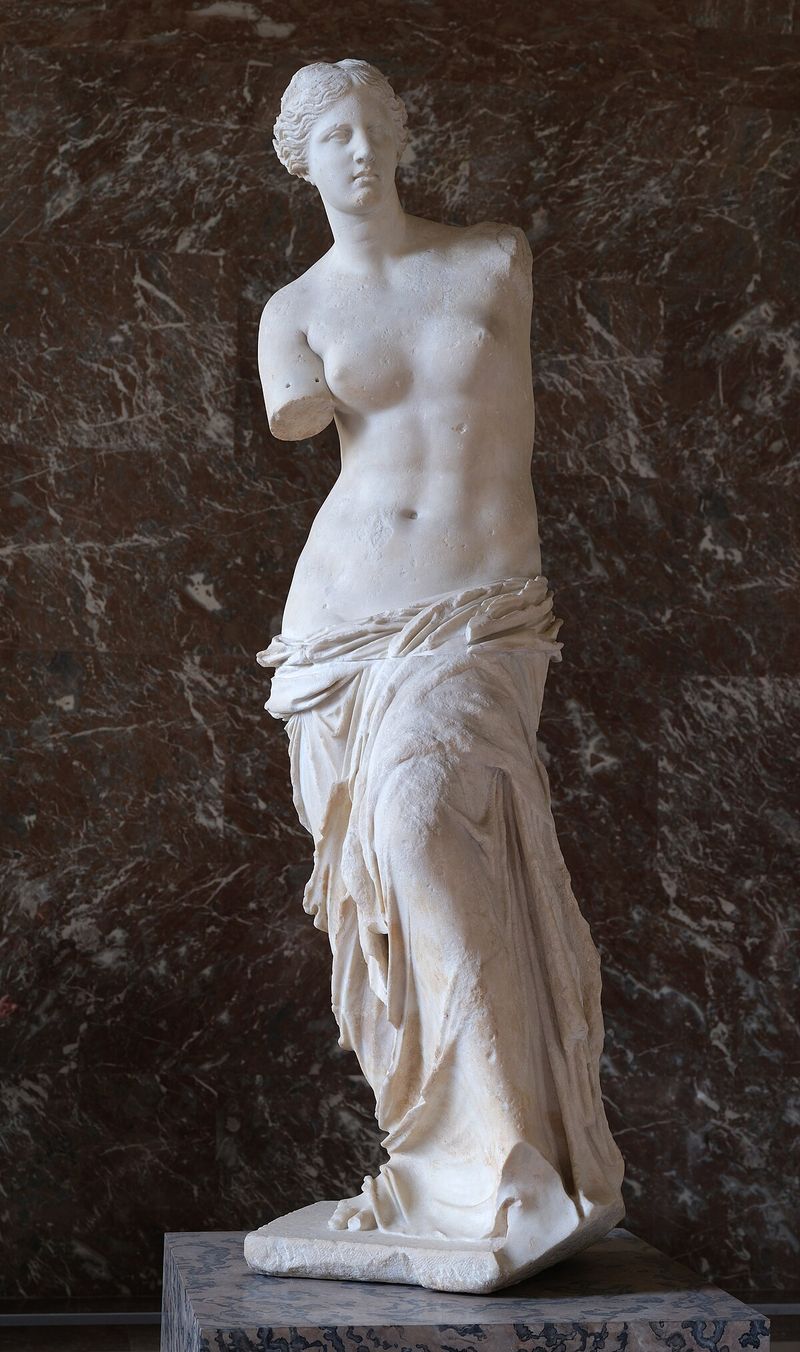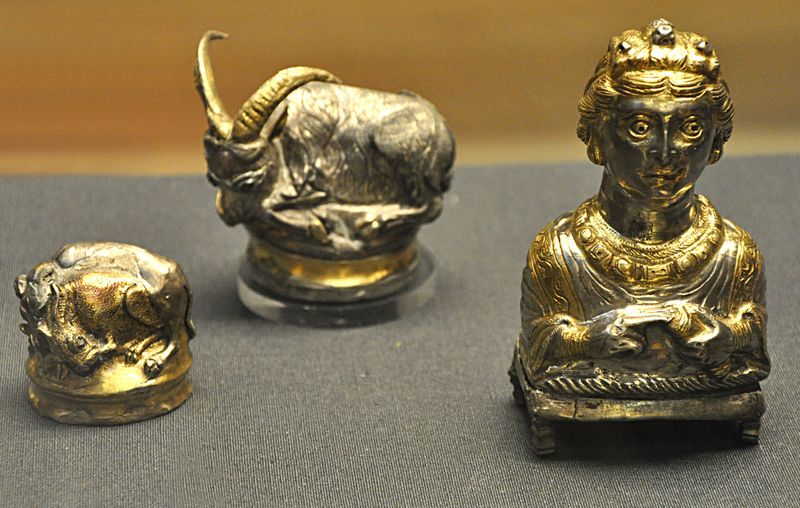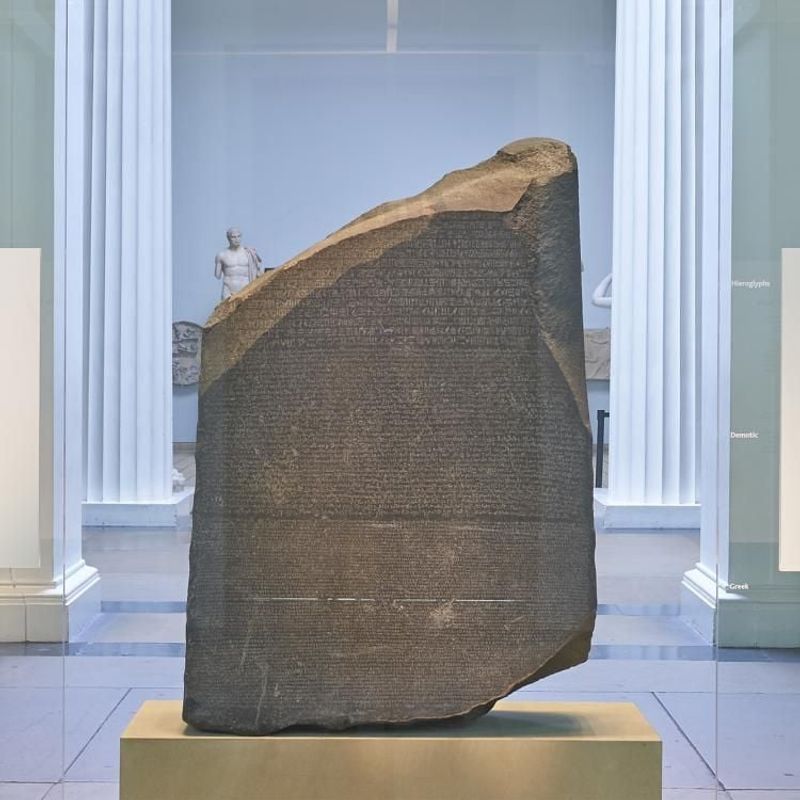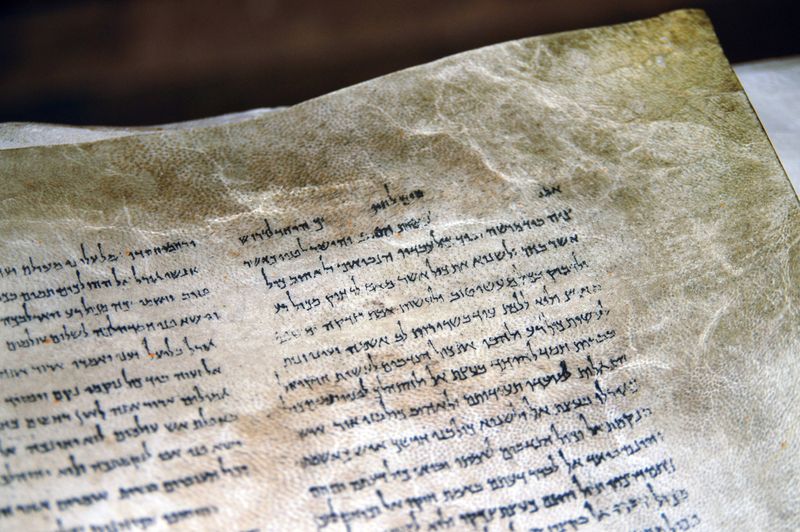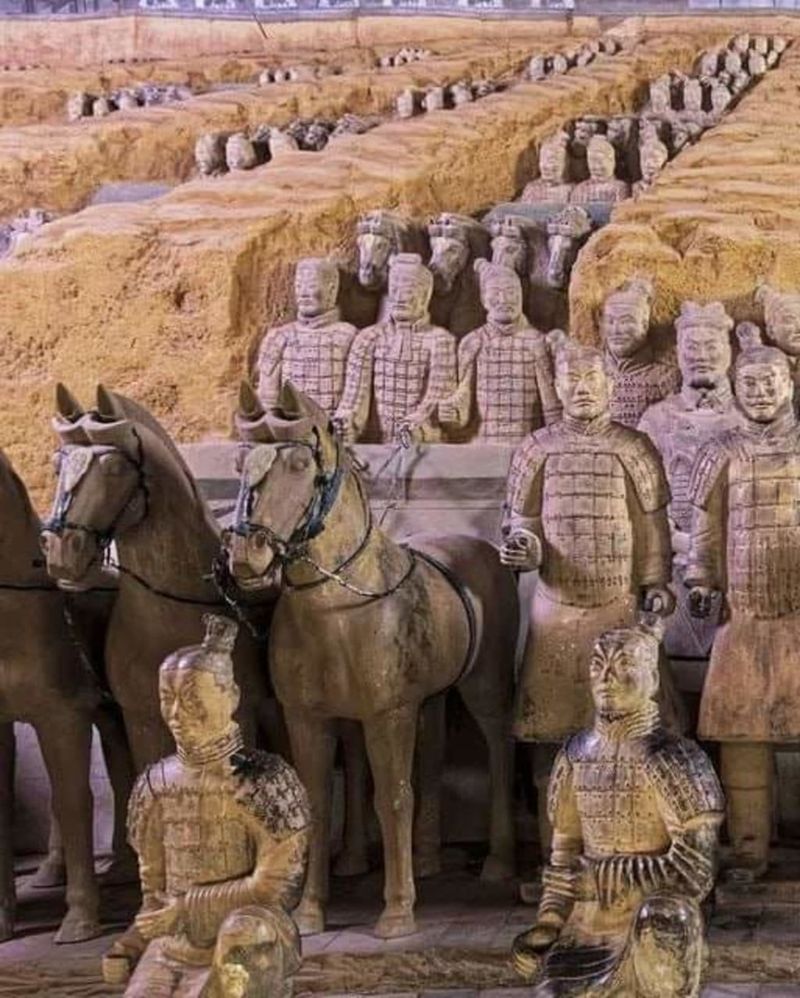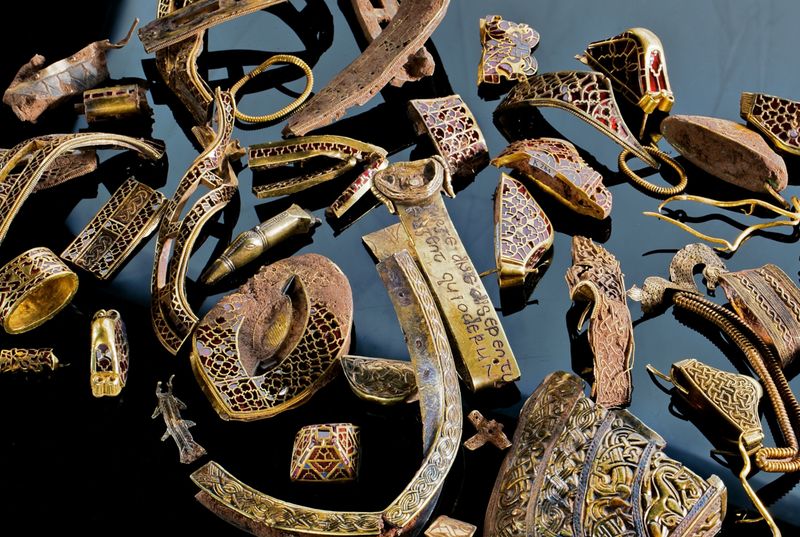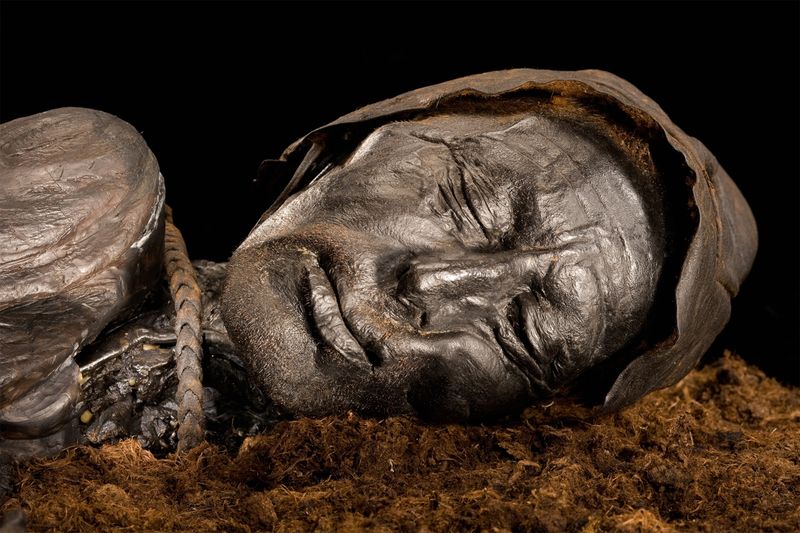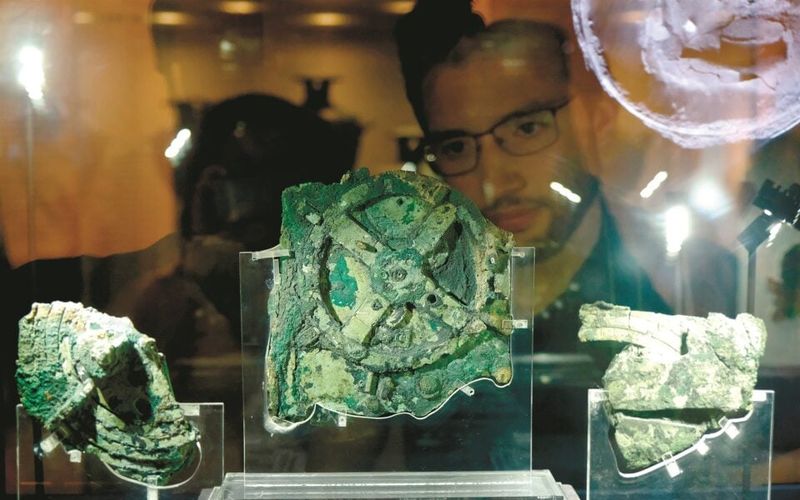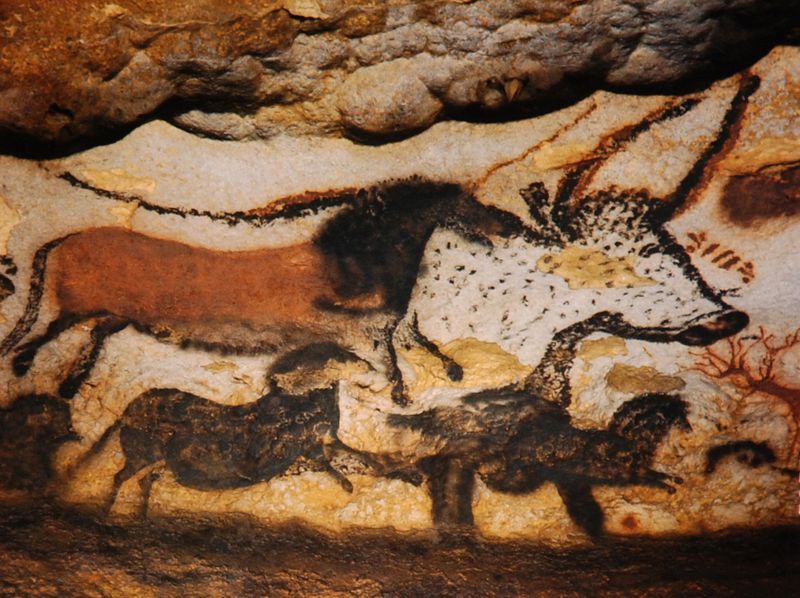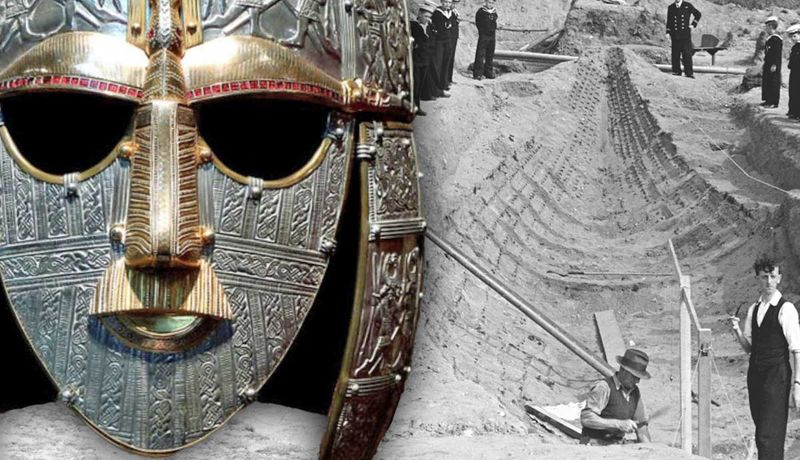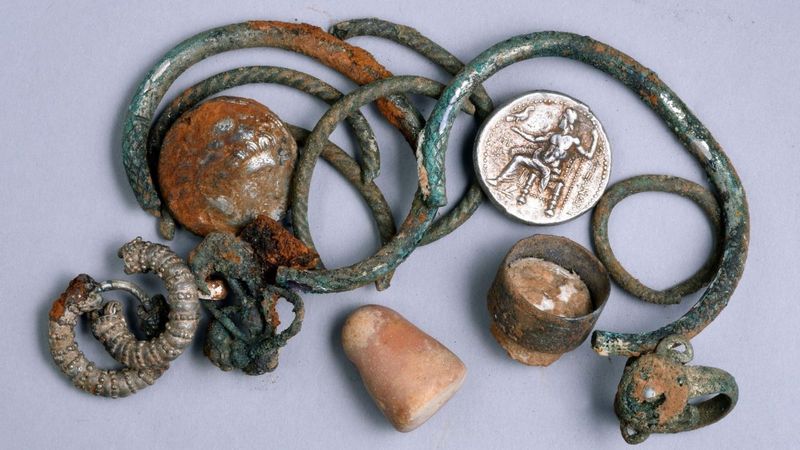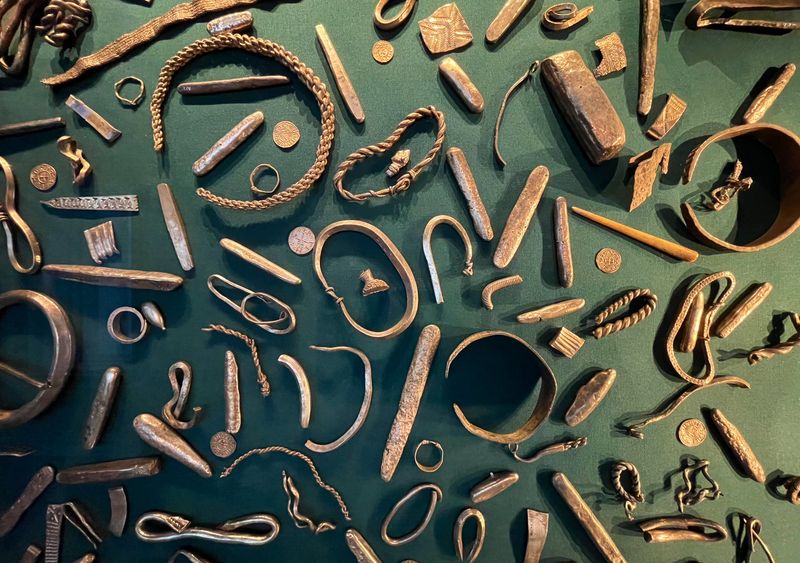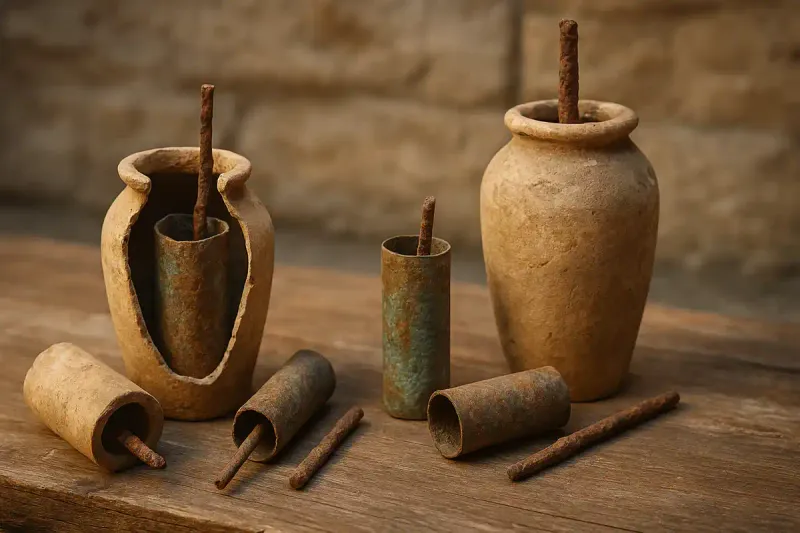Throughout history, some of the most incredible artifacts have been unearthed in the most unexpected locations. From fields and deserts to caves and seas, these discoveries have reshaped our understanding of ancient cultures and historical events. Here, we explore 15 remarkable artifacts found where one might least expect.
1. Pazyryk Carpet
In the icy grip of Siberia’s Altai Mountains, archaeologists uncovered a remarkable textile. The Pazyryk Carpet, discovered in a frozen tomb, is the oldest known surviving carpet, dating back 2,500 years.
Preserved by permafrost, its intricate patterns and vibrant colors offer a testament to ancient craftsmanship. The carpet’s discovery has provided insights into the artistic and cultural practices of the nomadic peoples of the region.
This find, nestled in the frozen earth, serves as a link between past and present, highlighting the enduring nature of human creativity.
2. Bactrian Gold
Amidst the sands of northern Afghanistan, Soviet archaeologists unearthed a dazzling collection in 1978. The Bactrian Gold, discovered in ancient burial mounds, consists of thousands of gold artifacts, including crowns and intricate jewelry.
These treasures, dating back to the 1st century BCE, showcase the opulence and artistic skill of the Bactrian civilization. The artifacts provide a glimpse into a culture rich in tradition and artistry.
The discovery, made during turbulent times, nearly vanished in conflict, yet its preservation tells a story of resilience and historical continuity.
3. Venus de Milo
In 1820, a farmer on the Greek island of Milos made an aesthetic discovery that would captivate the world. While digging in his field, he unearthed the Venus de Milo, a statue of Aphrodite, the Greek goddess of love and beauty.
The statue, renowned for its graceful form and enigmatic beauty, dates back to the Hellenistic period. Its missing arms add to its allure, leaving viewers to ponder their original positions.
This serendipitous find brought ancient Greek artistry to light, enriching the cultural tapestry of classical antiquity.
4. The Hoxne Hoard
A lost hammer led to a fortuitous archaeological find in Suffolk, England. In 1992, while searching for his missing tool, a man wielding a metal detector unearthed the Hoxne Hoard. This Roman treasure trove included gold and silver coins, jewelry, and household items, buried around 407 AD.
The hoard’s discovery provided a window into the wealth and lifestyle of Roman Britain. Each piece, meticulously crafted, speaks to the artistry and economic conditions of the time.
The accidental discovery turned a field into a focal point for understanding Roman influence in England.
5. Rosetta Stone
Amidst the chaos of war, French soldiers stumbled upon a treasure of linguistic value. The Rosetta Stone was unearthed in 1799 near Rashid, Egypt. This stone slab, inscribed with the same text in Greek, Demotic, and hieroglyphs, became the key to deciphering Egyptian hieroglyphs.
Its discovery unlocked the secrets of ancient Egyptian civilization, bridging gaps in knowledge that had persisted for millennia. The stone’s unexpected unearthing, during mundane construction work, underscores how chance can intertwine with historical breakthroughs.
Today, it stands as a beacon of linguistic enlightenment in the British Museum.
6. Dead Sea Scrolls
In the arid expanses of the El-Bariyah, a shepherd’s innocent curiosity led to a discovery of immense historical impact. The Dead Sea Scrolls were found by Bedouin shepherds in a cave near Qumran. These ancient manuscripts, dating from the 3rd century BCE to the 1st century CE, include biblical texts and sectarian documents.
Their unearthing has revolutionized the understanding of Jewish history and early Christianity. The scrolls, preserved by the dry climate, offered a tangible link to ancient beliefs and practices.
What began as a simple search for a stray goat ended in a monumental historical find.
7. Terracotta Army
In 1974, farmers digging a well near Xi’an, China, unearthed a silent army. The Terracotta Army, entombed with China’s first emperor, Qin Shi Huang, comprises thousands of life-sized clay soldiers, each uniquely detailed. This extraordinary discovery highlighted the emperor’s quest for immortality.
The soldiers, horses, and chariots were intricately crafted to accompany the emperor in the afterlife, offering insights into ancient Chinese beliefs and military practices.
The farmers’ chance excavation revealed a world of artistry and ambition, making the site a monumental archaeological treasure.
8. The Staffordshire Hoard
In a quiet farmer’s field in Staffordshire, England, a treasure lay hidden for centuries. The largest collection of Anglo-Saxon gold and silver ever found, the Staffordshire Hoard was discovered by a metal detectorist. The find included exquisite filigree pieces, sword fittings, and religious items, all dating back to the 7th century.
This unprecedented hoard has provided historians with invaluable insights into Anglo-Saxon craftsmanship and power dynamics. Its discovery was as serendipitous as it was significant, forever altering perceptions of early medieval England.
The field, once unremarkable, became a site of historical importance overnight.
9. Bog Bodies
In the cold, damp bogs of Northern Europe, peat cutters stumbled upon time capsules of human history. Bog bodies, like the Tollund Man, were naturally mummified in the acidic, oxygen-poor conditions. These bodies, dating from the Iron Age, provide a direct connection to ancient societies.
The remarkable preservation of skin and organs offers insights into the diet, health, and rituals of the time. Each discovery tells a story, revealing both daily life and ritualistic practices.
These unwitting finds bridge the gap between the past and present, speaking of lives long forgotten but remarkably preserved.
10. Antikythera Mechanism
Beneath the Aegean Sea, an ancient shipwreck revealed a mechanical marvel to sponge divers. The Antikythera Mechanism, recovered off the remote island of Antikythera, is a 2,000-year-old device considered the first analog computer.
Its intricate gears and dials were used to predict astronomical positions and eclipses. This bronze artifact demonstrated advanced technological understanding in the ancient world.
The mechanism’s recovery from the sea depths illuminated the ingenuity of ancient Greek engineering, offering a glimpse into the scientific pursuits of the past.
11. Lascaux Cave Paintings
In 1940, four boys chasing their dog stumbled into a prehistoric gallery. The Lascaux Cave Paintings in France, dating back 17,000 years, feature detailed depictions of animals and human figures. These artworks provide a window into the lives and imaginations of our prehistoric ancestors.
The cave’s walls, adorned with vibrant pigments, demonstrate an early form of storytelling and communication. The paintings’ discovery expanded the understanding of human artistic expression.
What began as a playful chase ended in unearthing a cornerstone of early human culture and creativity.
12. Sutton Hoo Ship Burial
Beneath an unassuming mound in Suffolk, England, lay a king’s final journey. The Sutton Hoo Ship Burial, uncovered in 1939, revealed a 7th-century ship filled with treasures. This discovery transformed the understanding of early medieval Britain.
The site contained a wealth of artifacts, including weapons, armor, and a magnificent ceremonial helmet. These items highlighted the craftsmanship and cultural connections of the period.
The excavation turned a quiet estate into a site of historical significance, shedding light on the Anglo-Saxon world.
13. Cave of the Treasure Hoard
In 1961, shepherds wandering the El-Bariyah stumbled upon the Cave of the Treasure Hoard. This hidden cache contained copper scrolls and religious artifacts. The items, concealed for centuries, have intrigued historians with their mysterious origins.
The scrolls, inscribed with a list of buried treasures, tantalize with stories of hidden wealth and religious significance.
This accidental find enriched historical understanding, turning a barren landscape into a treasure trove of secrets.
14. Cuerdale Hoard
In 1840, laborers repairing the banks of the River Ribble unearthed a Viking treasure. The Cuerdale Hoard, found in Lancashire, England, contained over 8,600 silver items, including coins and ornaments, hidden in a lead chest.
This hoard, one of the largest Viking silver finds outside Scandinavia, offers insights into the trade and economy of the Viking Age. Each piece reflects the interconnectedness of European cultures during this period.
The accidental discovery turned a mundane work site into a significant archaeological landmark.
15. Baghdad Battery
In a 1938 excavation near Baghdad, a series of clay jars with copper cylinders were discovered. Dubbed the Baghdad Battery, these artifacts have sparked debates on early electrical knowledge.
The jars, dating back to the Parthian period, may have been used for electroplating or other purposes, showcasing the ingenuity of ancient inventors.
The discovery continues to intrigue archaeologists and historians, offering a glimpse into the technological capabilities of early civilizations.
